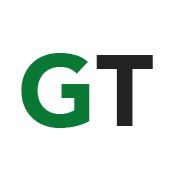Ensuring Pet Food Safety: From Sourcing to Delivery
- Green Terra

- Oct 13
- 4 min read
Producing pet food that meets the highest standards of safety and nutrition is a complex task. It requires a thorough understanding of the entire supply chain, from raw material sourcing to final packaging. In this article, I will share insights into the essential pet food safety measures that businesses must implement to maintain product integrity and consumer trust. These measures are not only critical for compliance but also for building a reputation as a reliable supplier in the agricultural sector.
Understanding Pet Food Safety Measures
Pet food safety measures encompass a range of practices designed to prevent contamination, ensure nutritional adequacy, and maintain product consistency.The process begins with selecting high-quality raw materials from approved suppliers. Every ingredient is verified for origin, composition, and safety — ensuring it is free from harmful substances such as pesticides, heavy metals, and pathogens.
Once raw materials arrive at our production or partner facilities, they undergo rigorous inspection and testing — including moisture content analysis, microbiological tests, and visual checks.Maintaining a clean and controlled environment during processing is equally crucial. Equipment is sanitized regularly, and temperature and humidity are continuously monitored to prevent cross-contamination.
Packaging plays a vital role in maintaining freshness and safety. It must protect the product from moisture, light, and oxygen, which can degrade nutritional value. Proper labeling — with batch numbers, expiry dates, and storage instructions — ensures full traceability from factory to feeding bowl.

Implementing Effective Safety and Quality Systems
To ensure consistency and safety at every stage, producers must establish Standard Operating Procedures (SOPs) aligned with ISO 9001 and GMP+ Feed Safety Assurance standards. These define responsibilities, hygiene practices, and control points throughout production.
Regular staff training on hygiene, equipment operation, and emergency response ensures proper execution. Internal audits and inspections help identify risks and continuous improvement opportunities, while traceability systems guarantee that every batch can be tracked from sourcing to delivery.
Technology plays a central role — automated sensors and data loggers continuously record key parameters like temperature and humidity, supporting HACCP critical control points and enabling immediate corrective actions..

Which is an example of a quality control measure?
An example of a quality control measure in pet food production is the implementation of Hazard Analysis and Critical Control Points (HACCP). HACCP is a systematic preventive approach that identifies potential hazards and establishes control points to mitigate risks. This method focuses on biological, chemical, and physical hazards that could compromise product safety.
For instance, during the cooking process, temperature control is a critical control point. Ensuring that the product reaches the required temperature eliminates harmful bacteria such as Salmonella and Listeria. Another control point might be the metal detection system installed after packaging to prevent foreign objects from reaching consumers.
Regular sampling and laboratory testing of finished products also serve as quality control measures. These tests verify nutrient content, moisture levels, and the absence of contaminants. If any deviations are detected, corrective actions are taken immediately to prevent distribution of substandard products.
By integrating these measures into daily operations, businesses can maintain high standards and comply with regulatory requirements.

The Role of Supplier Partnerships in Quality Assurance
Maintaining strong partnerships with suppliers is fundamental to ensuring pet food safety. Reliable suppliers provide consistent, high-quality raw materials that meet predefined specifications. Establishing clear communication channels and conducting regular supplier audits help verify compliance with safety standards.
Contracts should include clauses that require suppliers to adhere to specific quality criteria and provide documentation such as certificates of analysis. This documentation confirms that ingredients have been tested and meet safety thresholds.
Collaboration with suppliers also facilitates early detection of potential issues. For example, if a supplier identifies contamination in a batch of raw materials, prompt notification allows the manufacturer to halt production and prevent compromised products from entering the market.
Furthermore, sourcing sustainable and traceable ingredients aligns with the broader goal of environmental responsibility. This approach supports the production of organic fertilizers and sustainable animal protein feed, reinforcing the company’s commitment to quality and sustainability.
Continuous Improvement and Innovation in Pet Food Safety
The pet food industry is dynamic, with evolving regulations and consumer expectations. Continuous improvement is essential to stay ahead. Businesses should regularly review their safety protocols and incorporate new technologies and best practices.
Innovation can take many forms, such as adopting advanced analytical techniques for contaminant detection or implementing blockchain technology for enhanced traceability. These innovations increase transparency and reduce the risk of fraud.
Employee feedback is another valuable resource for improvement. Frontline workers often identify practical challenges and suggest solutions that management might overlook. Encouraging a culture of open communication fosters a proactive approach to safety.
Finally, participating in industry forums and training programs helps companies stay informed about emerging risks and regulatory changes. This knowledge enables timely adjustments to safety measures, ensuring ongoing compliance and product excellence.
Building Trust Through Transparent Quality Control
In the competitive pet food market, trust is a key differentiator. Transparent communication about safety practices and quality standards reassures customers and partners. Publishing audit results, certifications, and safety reports demonstrates accountability.
I recommend that businesses leverage digital platforms to share information about their quality control measures. Transparency not only enhances reputation but also supports marketing efforts by highlighting commitment to excellence.
Ultimately, rigorous safety measures combined with transparent practices create a strong foundation for long-term success. This approach aligns with the goal of becoming a global supplier known for sustainable animal protein feed and organic fertilizers, supported by reliable logistics and consistent quality.
By focusing on these pet food safety measures, businesses can ensure their products meet the highest standards. Implementing thorough inspections, maintaining supplier partnerships, embracing innovation, and fostering transparency are all critical steps. These efforts contribute to safer products, satisfied customers, and a stronger position in the agricultural sector.



Comments